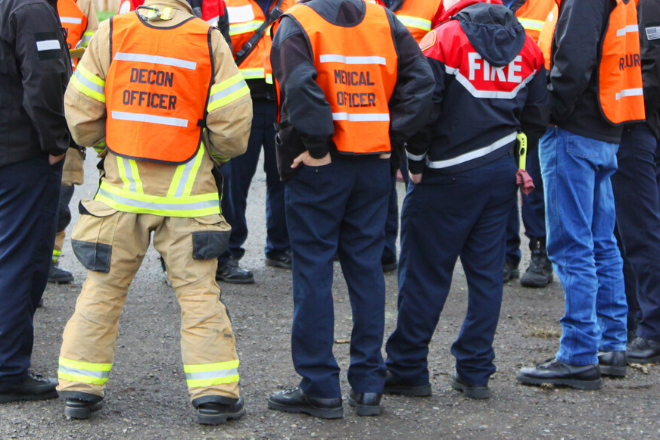Article by Jeff Bedford, Holton-Arms School
Most schools have come a very long way to prepare for worst-case scenarios since the horrors of Columbine, Virginia Tech and Sandy Hook, among others. Hopefully, your school has emergency plans that are written, briefed to faculty, staff and students and then drilled. But can you say that your school’s leadership is prepared to address and handle specific situations that may not be as oft-discussed as a lockdown or shelter drill?
Types of Exercises
In the world of law enforcement, hazardous material control, and emergency medical services, the use of exercises to hone emergency management skills are now commonplace, but do you do them in your school? Prior to my work at Holton-Arms School, I spent 27 years in the FBI. For three of those years I was part of the Bureau's Crisis Management Unit and Critical Incident Response Group, where I wrote and conducted exercises, so
I know their value. They can take several formats:
- Full-Scale Exercises: As the name implies, this type of exercise brings all appropriate personnel into a scenario that is guided by a script. Generally, volunteers act out roles, such as victims, criminals or first responders, and respond to “injects,” or different elements of a hypothetical crisis. If you allow the local police department to use your school to train for an active shooter event, that would be considered a full-scale exercise by the police department.
- Command-Post Exercises: Less common but still utilized, these exercises call for numerous agencies to solve a fictional major disaster, through the steps of a devastating event, response and recovery, investigation, and finally, reconstruction. Depending on the size of your school — if it has branches in other locations or is so large that some divisions never come in contact with others — this type of exercise could be utilized to ensure everyone knows what to do when a catastrophe occurs.
- Tabletop Exercises: The most basic exercise yet is still quite effective. A tabletop exercise is like a smaller-scale command-post exercise — fewer participants work through the scenario and you talk rather than act through the scenario. The tabletop leader should have prompts and drive the scenario forward with a well-conceived and clearly delineated series of events. For school administrators and department heads on tight schedules, tabletop exercises are probably the best way to test preparedness.
Any exercise is meant to stimulate people to think and talk about scenarios that security managers worry about daily but keep at bay 99% of the time.
Any exercise is meant to stimulate people to think and talk about scenarios that security managers worry about daily but keep at bay 99% of the time. Scenarios should be informative, thought-provoking, unpredictable and slightly stressful but ultimately enjoyable to work through, even if they touch on the dark side of school life.
Running a Tabletop Exercise
Tabletop exercises have challenges, not the least of which is getting the appropriate people to the table. Notably, the primary decision-makers must have designated back-ups who are also trained in crisis management, in case the primary is unavailable when a real situation arises. Once you have the right people, the process before, during and after the exercise is fairly basic.
Before the Exercise
- Develop a believable storyline that can be moved along in stages within the time allotted. The scenario should be specific to your school’s demographics and location and your decision-makers’ skill level.
- Keep in mind that scenarios can have more than one tentacle. A major event can get worse as additional twists and turns are introduced.
- Run the basic scenario by a trusted member of the decision-making team before trying it on a big group. You don’t need to go into specifics; just see if they agree on the general concept.
- Prepare two or three resolutions to the scenario. Your ultimate solution to the problem might not be the one the participants come to, and you must be able to “go with the flow.”
During the Exercise
Participants must make concrete decisions, and the moderator must actively listen to discussions; in a real event, such decisions are required, so clarify and track what is discussed.
- A quick refresher in crisis management preceding the exercise helps get everyone on the same page.
- Participants must make concrete decisions, and the moderator must actively listen to discussions; in a real event, such decisions are required, so clarify and track what is discussed.
- You will want to guide participants to the anticipated resolution but be prepared if they go a different direction. If your prepared slides don’t work, keep the scenario going as best as you can using what you know.
- Keep in mind that the decision-makers at your school need to make the decisions. Gently prompt them but let them decide. If an additional problem is “injected” into the exercise, you might be able to bring participants back to the predetermined resolution.
Post exercise
- If you run out of time conducting your exercise, which is common, call an end to it but give a quick synopsis of what happened.
- Ask participants to critique the exercise, preferably right at its end. If you have prepared a survey sheet beforehand, critiques can be anonymous.
- Assess if you have reached your goals.






